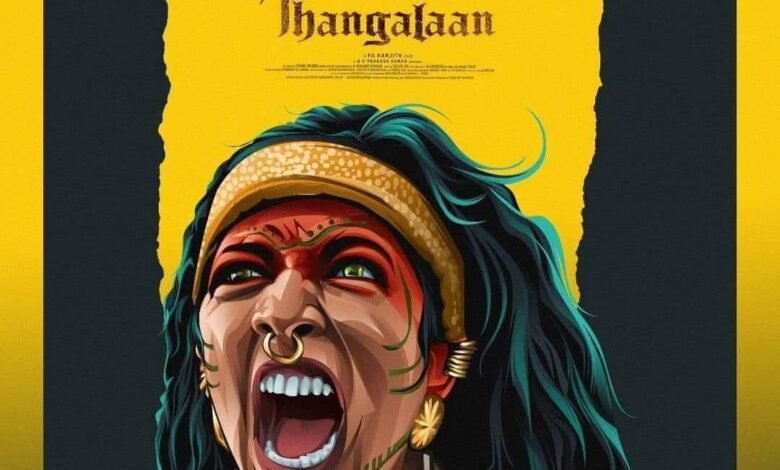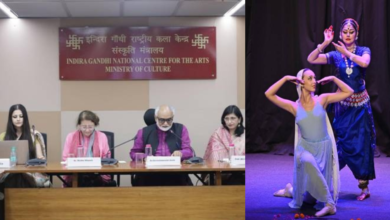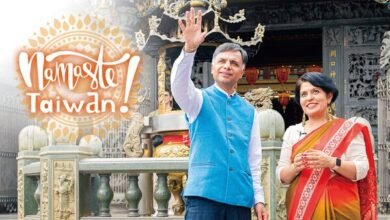Thangalaan: A masterful portrayal of social revolution
By Doruvu Paul Jagan Babu:Bureau Chief

Pa. Ranjith’s latest film explores the profound consequences of colonialism, greed, and the exploitation of India’s indigenous communities. While at first glance, the plot might seem simple—finding a gold mine—the film is a deeply symbolic excavation of history, power, and the persistent subjugation of marginalized communities. Ranjith weaves a tale not just of rebellion but of the long-standing socio-economic struggles of Dalits, Adivasis, and other oppressed groups.

The colonial and feudal greed
The narrative starts with the discovery of a gold mine, a metaphor for wealth that has long attracted the greed of feudal lords and colonial rulers alike. Ranjith draws parallels between the British exploitation of India’s resources and the earlier dominance of feudal powers, underscoring the theme of betrayal—when promises of sharing wealth with the local population are swiftly broken, and violence ensues.
The hero’s struggle is not merely about rebellion against foreign powers, but also a fight for justice, self-respect, and liberation from the shackles of both colonialism and caste oppression. The film’s climax, where the protagonist defeats the British and ties it into India’s broader freedom movement, serves as a call to reclaim the land, dignity, and history of India’s indigenous peoples.
Subverting dominant narratives
In an industry where mainstream cinema often glorifies historical figures and tales aligned with dominant castes and classes, Ranjith’s work boldly defies these conventions. If the story were to focus solely on valourizing a Tipu Sultan or a similar figure for their gold quests, it would have been lauded, earning awards, tax exemptions, and critical praise wrapped in the language of Brahminical superiority. Yet, Ranjith chooses instead to center Dalit and Adivasi voices, exposing the entrenched socio-political realities of their lives—far from the sanitized histories often depicted in Indian cinema.
Historical context and subjugation of Dalits and Adivasis
The movie delves into the historical subordination of Dalits and Adivasis, particularly in regions like Kolar, where they were oppressed by dominant castes. The story vividly portrays how Hindu landlords, under the guise of religious and legal entitlements like Devadaya and Dharmadaya, robbed indigenous landowners of their rights, pushing them into cycles of debt and poverty. Ownership of land is depicted not only as a means of survival but as a symbol of power. The land-grabbing tactics of the dominant castes, using methods ranging from intimidation to exploiting natural disasters, underscore the systemic violence faced by these communities.
The power of ideology
At the core of the film is not merely a physical struggle for survival but a deep ideological conflict. The character of Thangalaan is portrayed as a man torn between immediate survival and a long-term vision for liberation. His internal dialogue, symbolized through Harathi, represents the ideological struggle within oppressed communities—whether to fight for short-term gains or to strive for long-lasting freedom. This mirrors the historical reality of Dalit leadership, which has often been caught in a similar dilemma, from Babasaheb Ambedkar’s vision to the contemporary Dalit movements.

A philosophical journey
Ranjith’s film is not merely an action-revenge drama; it is a philosophical exploration of Dalit consciousness. The film’s characters—Thangalaan, Ashoka, Harathi—are not just individuals but represent deeper socio-political ideas. Ashoka, for example, is a reference to Emperor Ashoka’s transformation after the Kalinga War, symbolizing a journey from violence to enlightenment. Similarly, Harathi embodies the voice of reason and ideology, constantly challenging Thangalan’s impulsive decisions.
The animal metaphors and symbolism
Ranjith masterfully uses animals as metaphors to reflect the lives of Dalit and Adivasi communities. The black dog, donkey, elephant, and peacock—all serve as symbols of resistance, endurance, and exploitation. The black dog, which appeared in Ranjith’s earlier film Kaala, is a symbol of loyalty and protection, while the donkey represents the burden carried by these communities. The elephant symbolizes strength and patience, but also the potential for destruction when provoked. The peacock, a symbol of vanity and greed, is used to highlight the deception of the ruling class.
Buddhism, vedicism, and politics of conversion
Ranjith’s film also delves into the religious politics of the time. The conflict between Buddhism and Hinduism, particularly the role of Brahminism in the subjugation of Dalits, is a central theme. As Buddhism faced decline, Brahminism appropriated many of its ideas to prevent conversions. The film highlights this historical reality through characters like the Brahmin priest and the Dalit priest, showing how religion was weaponized to maintain caste hierarchies.
Ranjith does not shy away from confronting these uncomfortable truths. His portrayal of the Dalit priest who is lured into Hinduism with promises of temple access and privileges is a powerful commentary on the politics of conversion and caste manipulation. The film’s depiction of how Dalits were relegated to lower-caste status even after conversion highlights the futility of such promises within the hierarchical system of Brahminism.

Conclusion: A revolution on screen
Pa. Ranjith’s Thangalaan is more than just a film—it’s a revolution. Through the lens of a gold mine, Ranjith uncovers the buried truths of Dalit and Adivasi histories, their struggles for survival, and the ideological battles they continue to fight. The film’s exploration of colonial greed, caste oppression, and the politics of land ownership offers a powerful critique of historical and contemporary injustices.
In challenging the dominant narratives of Indian cinema, Ranjith reclaims the story of India’s marginalized communities, giving them the dignity, voice, and space they have long been denied. Thangalan is not just a story about finding gold—it’s a story about reclaiming lost histories and identities.
The review and interpretations of Thangalaan are of Samuel Raj, Dalit Intellectual. His insights offer a profound perspective on the film’s impact and cultural significance by revising the vision of Pa. Ranjith.








